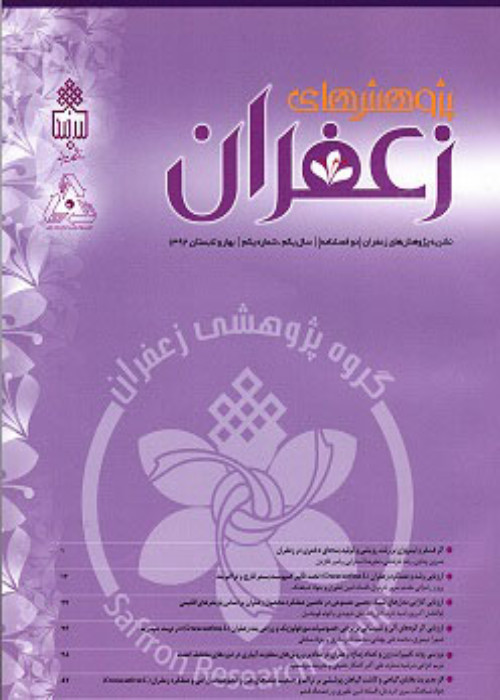Evaluation of the Effects of Chemical Fertilizer, Vermicompost and Plant Growth Promoting Rhizobacteria on Yield and Light Use Efficiency in Saffron
The concept of light consumption efficiency is widely used in the analysis of plant growth. Light use efficiency is the amount of dry matter produced (g per square meter) per unit of absorbed radiation (MJ per square meter) by the plant community. Fertilizer management can also play an effective role in increasing the sustainability of production, and one of the main pillars of sustainable agriculture is the use of biological fertilizers in agricultural ecosystems with the aim of eliminating or significantly reducing the consumption of chemical inputs. In a research study, Vejdani Aram et al. (2018) stated that Fertilizer 2 biofertilizer increased the wheat leaf area index by 1.14 to 54%, regardless of the amount of phosphorus chemical fertilizer used.
In order to evaluate the effects of chemical fertilizer, vermicompost and plant growth promoting bacteria on quantitative and qualitative yields and radiation use efficiency (RUE) of saffron, an experiment was conducted in the saffron research farm of Shahed University, Faculty of Agriculture in 2014-2015.The experiment was performed as a two-factor factorial in the form of a randomized complete block design with three replications. The first factor is chemical nitrogen fertilizer (urea) in three levels of 0, 50 and 100 percentage of the recommended rate of fertilizer based on soil test and the second factor: different types of non-chemical fertilizer in four levels of control, vermicompost (10 tons per hectare), biofertilizer containing Pseudomonas and Bacillus bacteria (PGPR) and a combination of PGPR and vermicompost. It should be noted that the treatments were applied to the saffron plant for year four and this study was conducted in the year fourth.
In this experiment, the results of the analysis of variance table showed that the main effect of nitrogen chemical fertilizer on the amount of plant dry matter in all three measurement times—the leaf area index in March, the relative growth rate measured in January and March, and the rate of net assimilation—was not significant. In March, light use efficiency, chlorophyll a, chlorophyll b, and total chlorophyll became significant. Also, the main effect of non-chemical fertilizer on total dry matter in all three measurements, plant growth rate, and specific leaf area measured in March was significant. The results showed that the interaction of nitrogen and non-chemical chemicals fertilizers on most physiological growth traits, ecological traits (radiation use efficiency) and photosynthetic pigment traits were significant. However, none of the fertilizer treatments and their interaction on the amount of active ingredient of stigma, number of flowers, fresh weight of petals, fresh weight of stigma and weight of flowers were not significant. Comparison of the mean of interaction showed that the highest amount of chlorophyll b was obtained in 50% and 100% treatments (611 mg/ml) and (569 mg/ml) for nitrogen fertilizer along with vermicompost and biofertilizer treatments, respectively. Also, the highest amount of total chlorophyll in 50% and 100% treatments (1367 mg/ml) and (1301 mg/ml) were related to nitrogen fertilizer with biofertilizer, respectively. The results of total dry matter measurement showed that the use of vermicompost at all three levels of nitrogen fertilizer increased the dry matter content almost at each measurement. The highest RUE (1.027 g/mJ) was related to vermicompost treatment with 100% nitrogen fertilizer, which was not significantly different from most other treatments.
In general, it can be said that the treatment of non-chemical fertilizers (vermicompost) with 100% nitrogen fertilizer provides much better conditions to improve growth and increase the efficiency of radiation Use in saffron. Therefore, due to the fact that Iran is located in a low-water region of the world, it is necessary to implement and study the effect of different non-chemical fertilizers compared to chemical fertilizers on the quantitative and qualitative performance of saffron under minimal irrigation conditions over several years.
- حق عضویت دریافتی صرف حمایت از نشریات عضو و نگهداری، تکمیل و توسعه مگیران میشود.
- پرداخت حق اشتراک و دانلود مقالات اجازه بازنشر آن در سایر رسانههای چاپی و دیجیتال را به کاربر نمیدهد.



